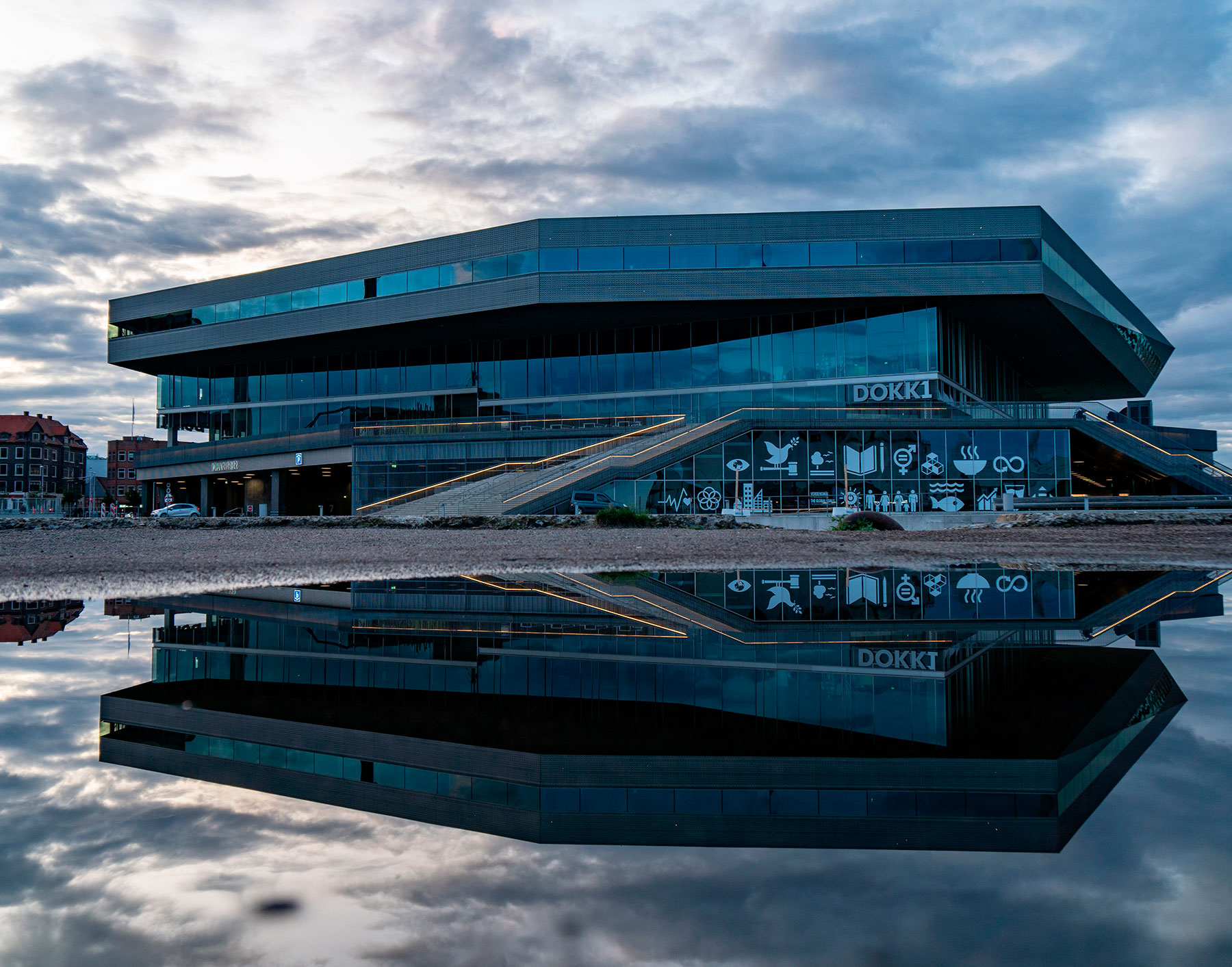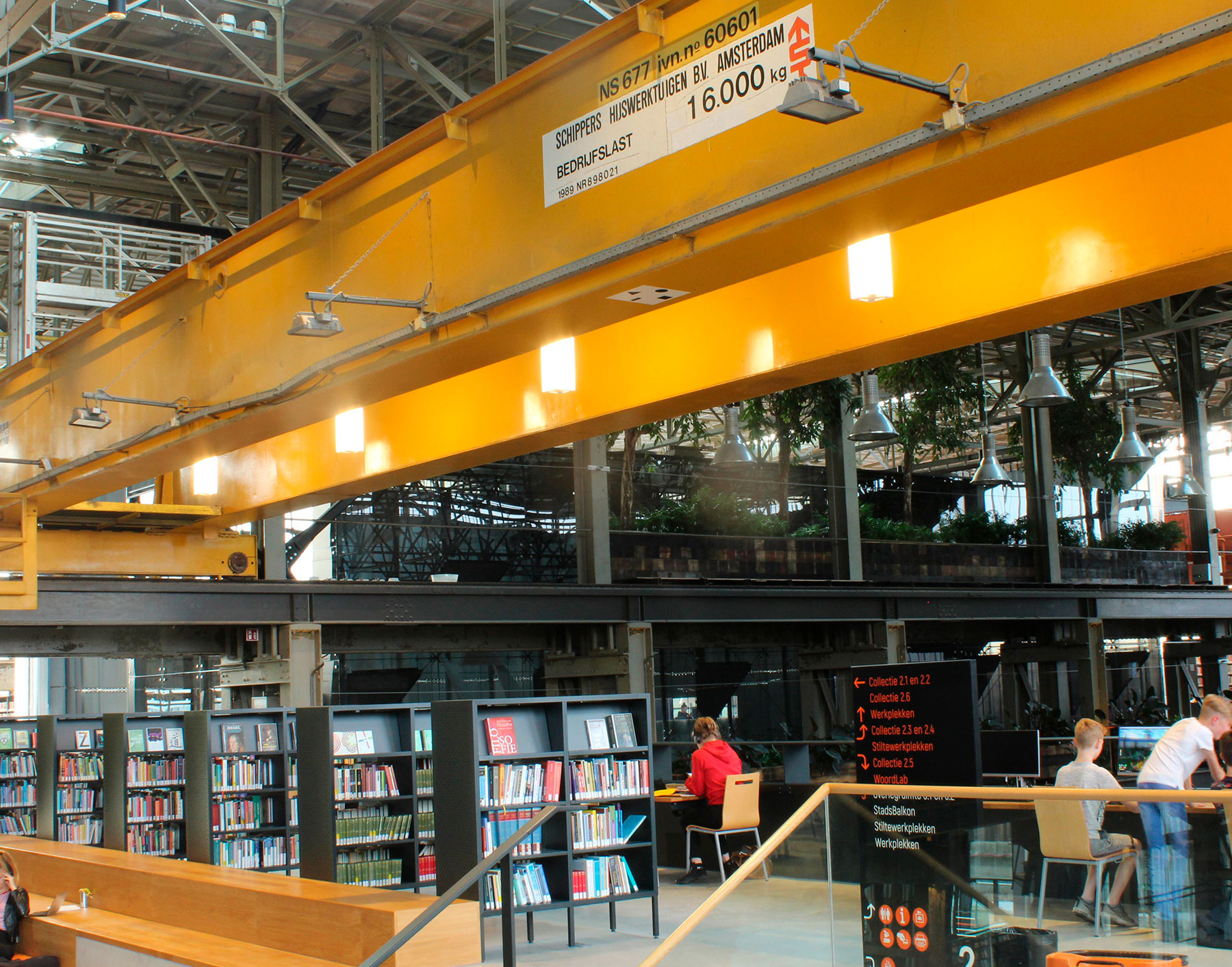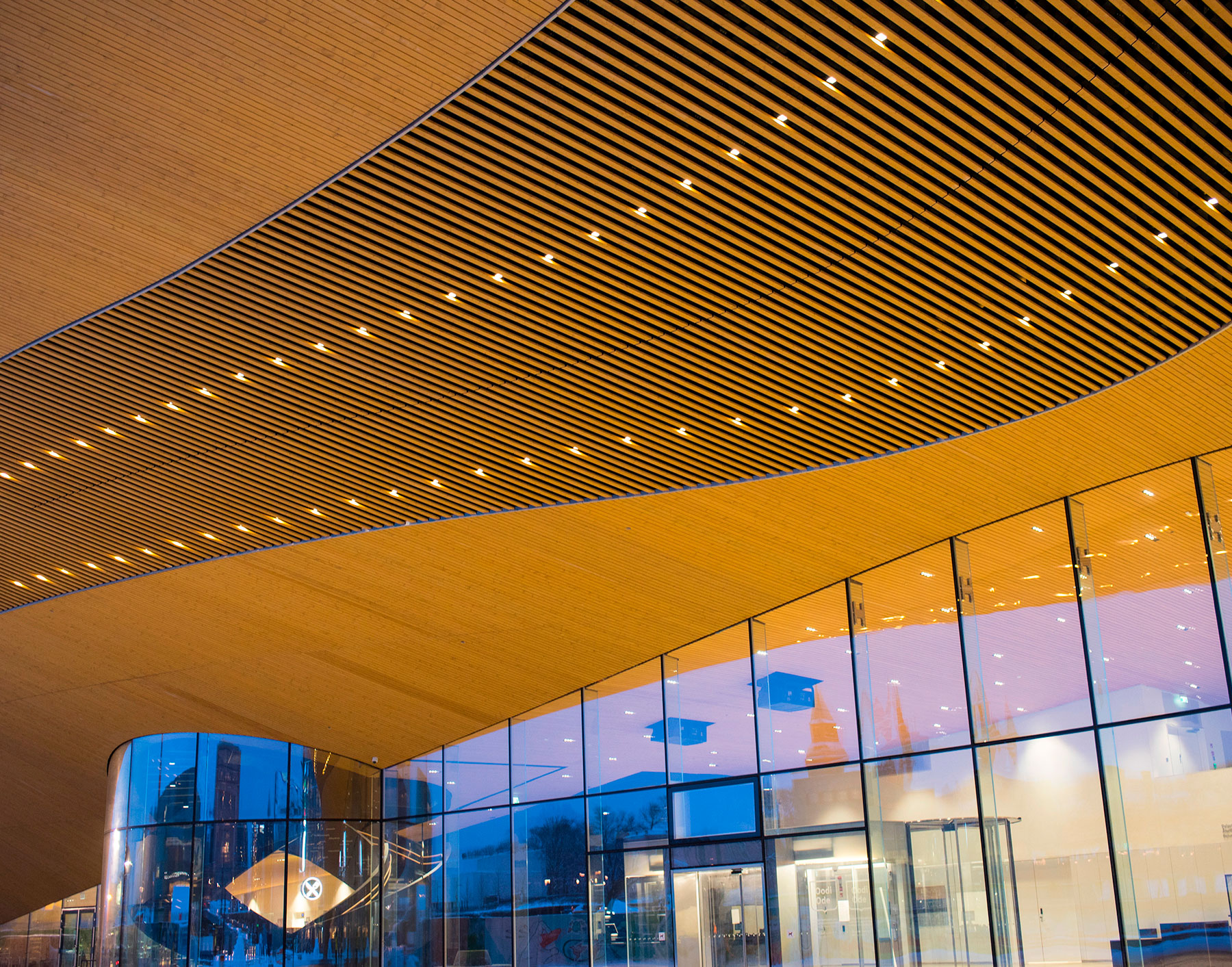
- Home |
- Search Results |
- How can we save UK libraries? A look at the innovative steps being taken by countries around the world
How can we save UK libraries? A look at the innovative steps being taken by countries around the world
Community, people-power and... robots? While the UK's libraries are in crisis, others across the world are striving to find a way forward. Here we look abroad for inspiration on how we can reimagine the future of these vital institutions.
Even before Covid-19 struck, libraries in the UK were in the midst of a crisis. Chronically underfunded since the government implementation of austerity in 2010, more than 800 libraries have closed across the UK in the decade since. Declining visitor numbers left our vital resource of book borrowing with something of an identity crisis, and an uncertain future.
As the pandemic took hold and the country locked down, the value of libraries became even more apparent. Suddenly, people with spare time on their hands realised they could borrow e-books from their local libraries without even leaving the house – sometimes by increases as high as 600%. And those who never stopped enjoying and relying on the community spirit their local library offered in the first place missed them even more when they were forced to close.
With lockdown easing, British libraries are getting back on their feet in a way few envisaged – with masks, and one-way systems, and a lot of hand sanitiser – but a more sustainable future of our libraries will need even greater changes. Here are some of the greatest modern libraries in the world – and what we may do well to learn from them.
Australia: put people first
Australians make more than 114 million visits to a library annually – more than a third of the population are card-carriers, and the country’s libraries receive more visitors than its museums, art galleries or theatres (for opera and musicals, at least. These are remarkable figures even for Australian librarians, many of whom imagined the internet would pave the way for the lending library’s demise.
What saved them? Offering communication, community and communion in the age of digital loneliness. Australia’s libraries understand the essential importance of offering a place to go that doesn’t cost a thing, and users often glean the information they need - such as, in one case, a recipe for chicken noodle soup for someone stricken with cold - over the phone.
During Covid-19 this was particularly evident, with the State Library of Victoria commanding citizen collector volunteers to create Memory Bank: A Collective Isolation Project, one of several community archive projects that ensured the library will continue to offer resources helpful for the future, as well as telling us about the past.
The Netherlands: respect your heritage

Dutch architecture firms have been deployed to design stunning libraries the world over, but what about those closer to home? Against all the steel, glass and shine of many cutting-edge libraries, Tillberg’s LocHal library seems distinctly rustic: and all the more inviting for it. Built in an adapted locomotive shed, LocHal’s imposing structure is cannily divided into several dreamy reading nooks, co-working spaces, event rooms and industry-specific education labs, making the library useful for contemporary needs. Also, there’s a lot of plants, which love the vast quantities of natural light that flood in through those enormous windows.
America: build in social housing
In the beginning of 2019, there was a first in the city of Chicago: a “co-located housing and public library branch”, otherwise known as a library that had mixed-income housing built on top. It seems like such a brilliantly simple idea it’s difficult to work out why it hadn’t been more widespread – other cities in America, such as New York, have bundled housing and libraries together, but in Chicago it became a real effort of the city’s Mayor Rahm Emanuel, with three combined-use buildings opening up last year. Based in the city’s Little Italy neighbourhood, the children-friendly, and flexible-space library occupied the ground floor, with 73 apartments sitting in the storeys above.
China: make it Instagrammable

China’s Tianjin Binhai Library is a photographic marvel: one enormous, undulating bookshelf swoops around a central globe, known as “The Eye”. Designed by Dutch architects Mvrdv, the library opened to 10,000 people - most of whom were queuing around the block - on its first day in 2017. The press swiftly caught on that not all of the 1.2 million books on show were actually real, with those impossibly out of reach instead being dummies made of aluminium. Still, the sheer style of the place has made it a top tourist destination in the Chinese city, luring in 15,000 people of a weekend. Come for the selfies, stay for the stories.
Canada: embrace the future
There are forward-facing libraries across Canada, which has seen the country’s cities climb into academic rankings of the best public library systems - Montreal, Toronto and Vancouver all jostling in the top 10 (by contrast, London - the only UK ranked - came in 27th place). What’s so good about them? A combination of things. Toronto unabashedly embraces the latest technology, with well-staffed podcasting studios, robot technology labs and 3D printers helping to lure in 70% of the city’s populace - but it also knows the power of a good book event, too, for which tickets are free and booked up in seconds. In Montreal, meanwhile, you can enjoy a glass of wine and a good meal at the in-library restaurant and in Vancouver 66% of the city’s population hold a library card.
Denmark: prioritise sustainability
Talking about the future of libraries is one thing, but talking about the future of the planet is an ever broader concern. Denmark's Dokk1 (main image), in Aarhus, was built in 2015 with sustainability at its core. More than 2,400 square metres of solar panels adorn its roof, seawater is used to cool the building down and the whole enormous building (it's the biggest library in Scandinavia) has been made from environmentally friendly and recyclable materials.
Finland: ask the people what they want

Stumble upon photographs of Helsinki’s Oodi library and you may mistake it for Pinterest. Opened in the depths of the Finnish winter, in December 2018, Oodi the crown of the jewel of Finland’s wealth of libraries. For a population of just 650,000 people, there are 853. Libraries are the country’s second-highest rated public service – sitting politely behind water. Oodi receives 10,000 visitors a day, but what’s really intriguing about it is that they don’t come for the books – of which there are a mere 100,000. Rather, the library - which describes itself as a “living meeting place” - acts as a kind of open platform, for everything from sewing machine hire to birthday parties to quiet magazine reading. How does it work? Because the people who designed Oodi asked the people what they wanted: a massive public consultation informed its creation. The proof is in the pudding – a beautiful, well-used library.
What did you think of this article? Let us know at editor@penguinrandomhouse.co.uk for a chance to appear in our reader’s letter page.
Image: Alexander Svensson